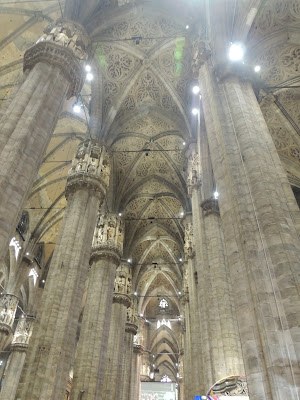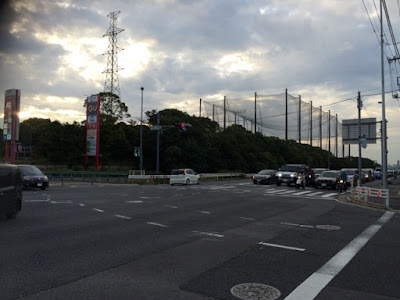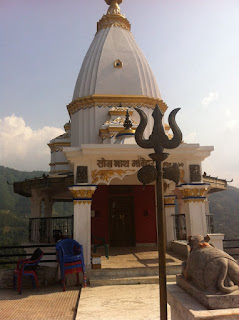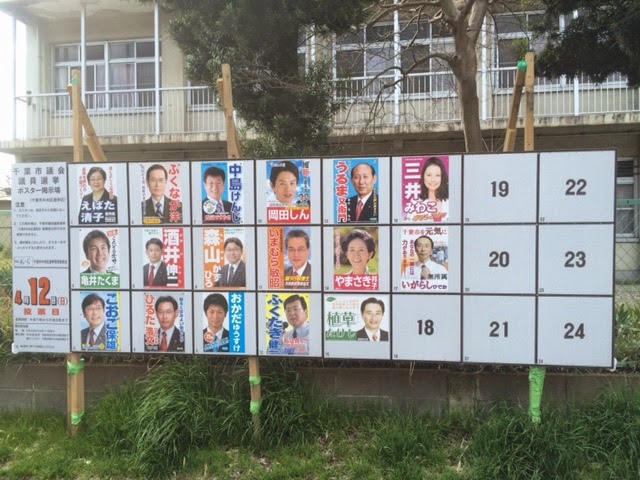Saturday, November 7, 2015
Tuesday, October 13, 2015
Indian Blockade to Nepal 2015 and its possible repercussions to India
Some countries are not directly connected to sea (called landlocked country) while some countries are totally surrounded by sea like Japan or Sri-Lanka (called island country). Nepal is one of the landlocked countries out of the 48 countries in the world. In South Asia, Nepal, Bhutan and Afghanistan are three landlocked countries. Nepal is surrounded by India in three sides while northern side is by Tibetan part of China.
Being landlocked country is very impending to the development as this situation hinders the international trade and access to marine resources. Moreover, in the modern times of globalization the free flow of goods and people are the basic tenets. The international trade these days is essentially free flow of the stuffs. For example Nepal is using cars far from Japan, medicine from Germany and so on. Similarly, Japan is consuming the banana from Ecuador, coffee from Brazil or medicine from Switzerland. In this context, the United Nations has made Convention on law of sea (ratified in 1982 ) which gives a landlocked country a right of access to and from the sea without taxation of traffic through transit countries. 166 countries including Nepal, India and China have ratified the convention.
Nepal though mountainous country has plain areas in the southern parts adjoining India where there are major export import border points including Birgunj, Biratnagar and Bhairahawa. Unhappy with the constitution promulgation by constituent assembly in Nepal through the 7 years of hard efforts, India has been continuously using its border for the obstruction of the free transport of stuffs most importantly the petroleum products. This has resulted in the severe shortage of the petroleum products. This is severe blow to the Nepal's path to the prosperity after the 10 years of the bloody civil war and recent severe earthquake in April, 2015 which have caused severe loss of lives and property.
Nepal has ushered in the modern world after the autocratic Rana regime fall in 1950s. In the last 50 years duration, India has used blockade to neighboring Nepal to grip in her hands to fulfill India's interests- 1969 during the Indira Gandhi regime, 1988 during Rajiv Gandhi and now in the time of Narendra Modi in 2015. Narendra Modi of Bharitiya Janata Party (BJP) was thought to be pronepali because of the Hindu majority country, holy land of Pashupatinath and Gautam Buddha. Modi was received very well in Nepal during his official visit to Nepal and the anti-Indian sentiments were the lowest in the recent times due to his highly friendly behavior and oratory skills. He said that India will always be with Nepal and help Nepal prosper with the emerging India side by side. After the blockade, it seems that his words were just cheap propaganda. Actually, India is party of Convention of sea and it is moral duty to follow the international law if she also wants be treated equally by other countries internationally.
Except Bhutan, which is pseudo independent small country, India has no good relations with her immediate neighbors. It has fought 3 wars with arch rival Pakistan after both countries' birth in 1947. Bangladesh, which was helped by India during the independence war, has severe reservations with India mostly in the water sharing issues including the Farraka Barrage along with the Bengali migration problems. India has fought war with China and still there are problems with borders. Moreover, relations with Myanmar, Srilanka, Maldives are not well. The neighbor first strategy of the Modi was seeming working in the first year of his office but with the economic blockade to Nepal it is failing. The goodwill of Nepali people towards India has again waned because it is painful. India needs to understand that the country can be small but not sovereignty.
Being big in the regional context does not allow impunity to India in bullying its neighboring country including Nepal. India should be grateful to Nepal which has allowed its citizen to work in India security forces as per the agreement between Nepal, Britain and nascent India in 1940s. Nepalese people in Indian security forces are working hard and risking their precious lives to maintain the calm situation not only in the cold Jammu and Kashmir but also in scorching sun of Rajasthan and very unfriendly environment of Northeast fighting different revolutionary and militant groups. If the situation persists as before Nepal will be forced to take another direction that will be very bad for the not only Indian security but also Indian economy and the international image. India has to come forward and apologize for the ongoing bullying behavior to Nepal and start the friendly behavior not in words but in action. World is watching this time.
Being big in the regional context does not allow impunity to India in bullying its neighboring country including Nepal. India should be grateful to Nepal which has allowed its citizen to work in India security forces as per the agreement between Nepal, Britain and nascent India in 1940s. Nepalese people in Indian security forces are working hard and risking their precious lives to maintain the calm situation not only in the cold Jammu and Kashmir but also in scorching sun of Rajasthan and very unfriendly environment of Northeast fighting different revolutionary and militant groups. If the situation persists as before Nepal will be forced to take another direction that will be very bad for the not only Indian security but also Indian economy and the international image. India has to come forward and apologize for the ongoing bullying behavior to Nepal and start the friendly behavior not in words but in action. World is watching this time.
Monday, August 17, 2015
Wednesday, August 5, 2015
Monday, August 3, 2015
Sunday, August 2, 2015
Saturday, August 1, 2015
Friday, July 31, 2015
Thursday, July 30, 2015
Wednesday, July 29, 2015
Friday, July 24, 2015
Thursday, July 23, 2015
Sunday, July 19, 2015
Thursday, July 16, 2015
Tuesday, July 7, 2015
Nepal-India Border Length Brekaup with Indian State
Nepal has border with Tibet/China on the North and India on South, East and
West. The open border with India is one of the most disadvantaged relationship
Nepal is facing because of the lack of the regulated human movement leading
to the human trafficking, narcotics sales and illegal trade. Before 1950 there was need of the documented evidence like passport to travel to India and vice versa. But with the unequal 1950 unequal Indo- Nepal Friendship (?) treaty, the border has been kept unregulated and open. Even the sky was unregulated and only after the Indian Airlines hijack in late 1990s it has been mandatory for both the nationalities to show official identity card like passport to travel. However, it has not been the case on the land border. Had India been
serious of making good relations with her neighbor Nepal, she should have made
the fortified barriers as with Pakistan. India is benefiting more through the
unregulated open border with Nepal like encroaching land, jobs for the poor Indian fellow and mass influx of Indians getting citizenship through the nexus of the corrupt and traitorous politicians and their crooks. Millions of Indian origin people are getting citizenship cards of Nepal and that will have severe repercussions on the politics and nationalism in the coming years. There are some people fearing Nepal going to the fate of Sikkim (loss of nation) or Fiji (political power usurp by Indians). This has created deep fear among the natives of Nepal towards the hegemony from the 1950s even after its independence from the British.
But given the high hopes from Indian Premier Narendra Modi with Indo--Bangladesh Land deal India will sort out the all the border disputes with Nepal. Modi has to create the regulated borders between India and Nepal and march in the path of prosperity.
But given the high hopes from Indian Premier Narendra Modi with Indo--Bangladesh Land deal India will sort out the all the border disputes with Nepal. Modi has to create the regulated borders between India and Nepal and march in the path of prosperity.
Name of
Indian State
|
Total border length
( in Kms)
|
Uttarakhand
|
263
|
Uttar Pradesh
|
560
|
Bihar
|
729
|
West Bengal
|
100
|
Sikkim
|
99
|
Total
|
1751
|
Labels:
Human trafficking,
Illegal trade,
India,
Narcotics sales,
Narendra Modi,
Nepal
Monday, June 15, 2015
Saturday, May 23, 2015
Wednesday, April 29, 2015
From Sorrow to Strength
Our regular
contributor Dr. Pralhad Uprety has contributed a very contextual article in Nepali
for the fellow people. The article titled Lessons to be learnt from the Nepal
The link for the article is:
http://samudrapari.com/20150428127893.htmlMonday, April 13, 2015
Saturday, April 11, 2015
Tuesday, April 7, 2015
Hanuman Chalisa in Nepali
It is good news to share with our valued readers that the much famous Hanuman Chalisa in Hindi by the great saint Tulasidas has been translated in Nepali language by the Dr. Eng. Pralhad Uprety. Hanuman, the ardent devotee of the Lord Rama is very well known God among Hindus. The following is the first snapshot of the pdf book.
The pdf book will be uploaded soon and notified so that many will be benefited. Jay Hanuman!
 |
Caption of Hanuman Chalisa in Nepali |
Wednesday, March 25, 2015
Wednesday, March 11, 2015
4th Anniversary of the Japan Mega-earthquake 2011
Today
is the 4th year of the Mega-earthquake 2011 that occurred the Northern Japan hitting
severely and killing more than 20,000 people mainly due to the Tsunami induced
through the earthquake. It is also the most costly disaster in the modern times
till date. RIP for the all victims of this disaster.
 |
| Example of destruction due to tsunami in 2011 (Photo by Dr Pralhad Uprety) |
Moreover,
this disaster exemplifies that there is nothing invincible for the mother earth.
Whatever strong infrastructures are made to our best knowledge, if they are
hindering the path of mother earth it will sure to crumble sooner or later. So, there is no
disaster proof structure as such although some people talk about this. This
is just ridiculous. It is a fact that we can made structures more stronger and
disaster resistant only but there is no full proof.
Against
the countermeasure against the natural hazard turning into disaster, we must carryout comprehensive implementation of interdisciplinary strategies to improve the
survival rate and the reduction in economic loss. Building up resilience against the impact of disaster in the worst case
scenario of the area of concern is utmost. Leaders and researchers must come
forward and sensitize the people to go hand in hand for the noble cause of
disaster risk reduction.
Tuesday, February 10, 2015
The Great Buddha of Kamakura, Japan
Once a capital region for about 100 years, Kamakura is one of the best talked places to visit for the foreigners. The main attraction is the big statue of Amitabha Buddha (阿弥陀仏 Amida Butsu in Japanese) which is 13.35 meter tall weighing 121 ton. It was built around 1423 circa with the collection of funds from devotees and well-wishers without any state support. It is cast in bronze with elaborate use of the joints which can be observed by visiting interior of statue.
 |
| The Great Buddha of Kamakura (Photo credit: Dr Pralhad Uprety) |
Located in Kamakura city in Kanagawa Prefecture, it is 1.5 hour drive from Tokyo Station and 1.5 km west from the Kamakura railway station. The entry to temple complex requires fee and one can even enter the interior of the statue by paying extra fee inside the temple complex. The statue was covered previously but the 1495 tsunami swept away the temple structure and since then it is open to the sky to these days. It is said that with the fall of the area as capital status (capital was shifted to Kyoto) it did not get the state fund for reconstruction.
It is one of the national treasures in Japan and she is trying to list it in the UNESCO World Heritage list. Wishing all the best in her efforts!!!!!.
Subscribe to:
Comments (Atom)























